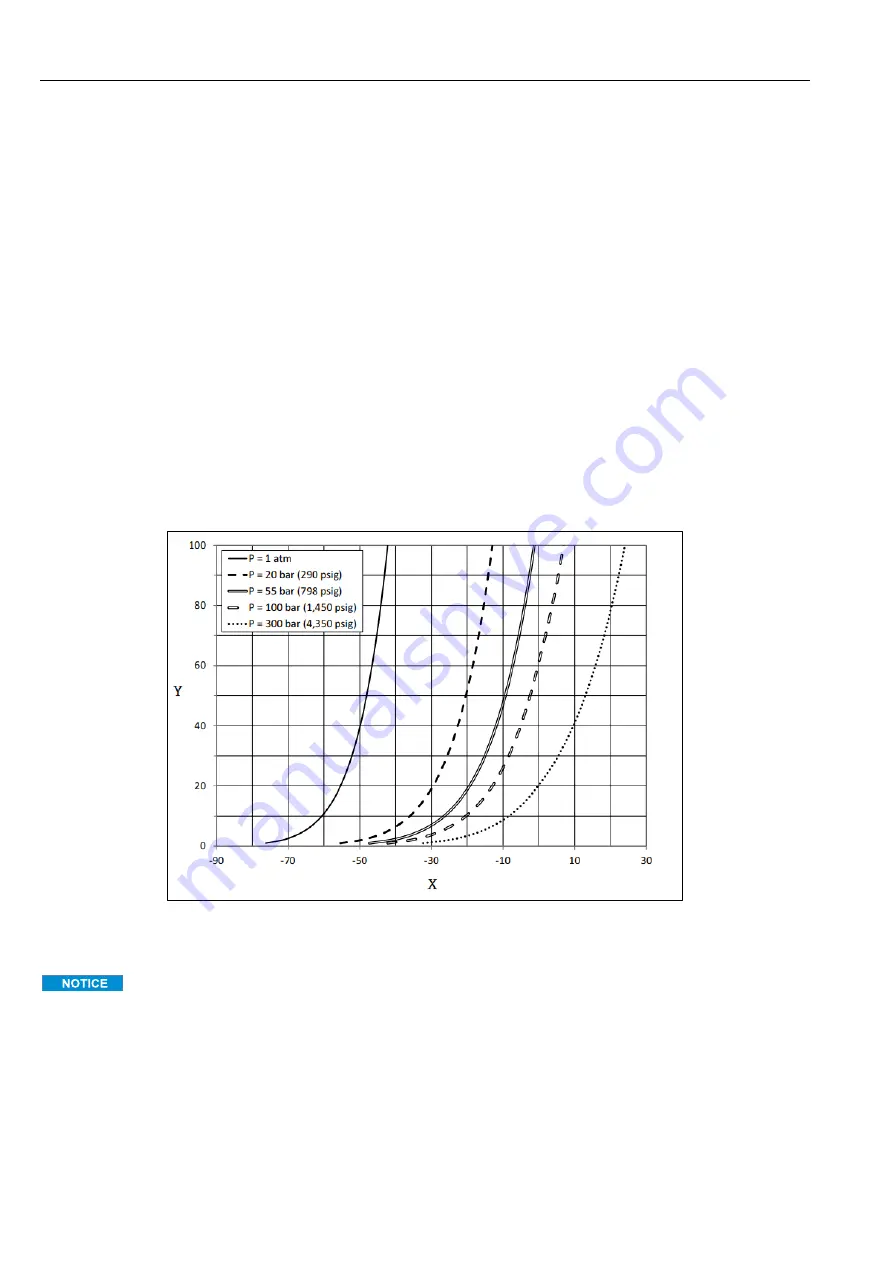
Operating Instructions
J22 TDLAS Gas Analyzer
148
Hauser
14
Dew point conversion
14.1
Introduction
In the context of TDLAS gas analyzers, water content refers to the concentration of water vapor in the gaseous phase.
Water content is typically stated as mole, mass or volume fraction, which are independent of a reference state, or as
mass of water per volume of gas, which is dependent on a reference state.
In some instances, it is desired to express the water content in terms of the water dew point for the gas mixture. The
moisture dew point (MDP) is the temperature (in degrees Fahrenheit or Celsius) at which moisture will start to
condense into liquid for a given concentration and pressure. Saturation implies that the water vapor is in equilibrium
with water in the liquid or solid phase (depending on which is present). When water vapor is in equilibrium with the
solid (ice) phase, the dew point is often referred to as the frost point.
TDLAS gas analyzers output their measurements in molar ratio such as parts per million by volume (ppmv), and
parts per billion (ppbv). For moisture measurements, dew point temperature is often preferred over concentration in
order to prevent water condensation at process operating temperatures. The MDP is calculated using industry-
accepted methods and TDLAS gas analyzers can provide MDP values through the display and the analog and digital
communication outputs.
The MDP calculation is always dependent on the moisture concentration (in ppmv) and the pressure at which the
MDP is to be calculated (usually the pressure in the process/pipeline). Depending on the calculation method used,
the stream composition may also be taken into consideration.
Fig 82. Relationships between the water concentration (ppmv) and MDP (°C) at various pressures
X Dew point (°C)
Y Water correlation (ppmv)
This table is for reference only.
Each line in the graph above represents a different pressure as indicated in the legend. When MDP is required, the
pressure must be specified. As gas pressure changes, the MDP for a given concentration will change.
For moisture ranges above about 2 ppmv, the methods are very effective. For lower moisture values, the calculation
methods must be extended beyond their stated boundaries which can result in dew point values that are inaccurate,
especially at higher pressures and streams with heavy hydrocarbons. For that reason, the molar outputs in ppmv and
ppbv will have lower uncertainty.



































